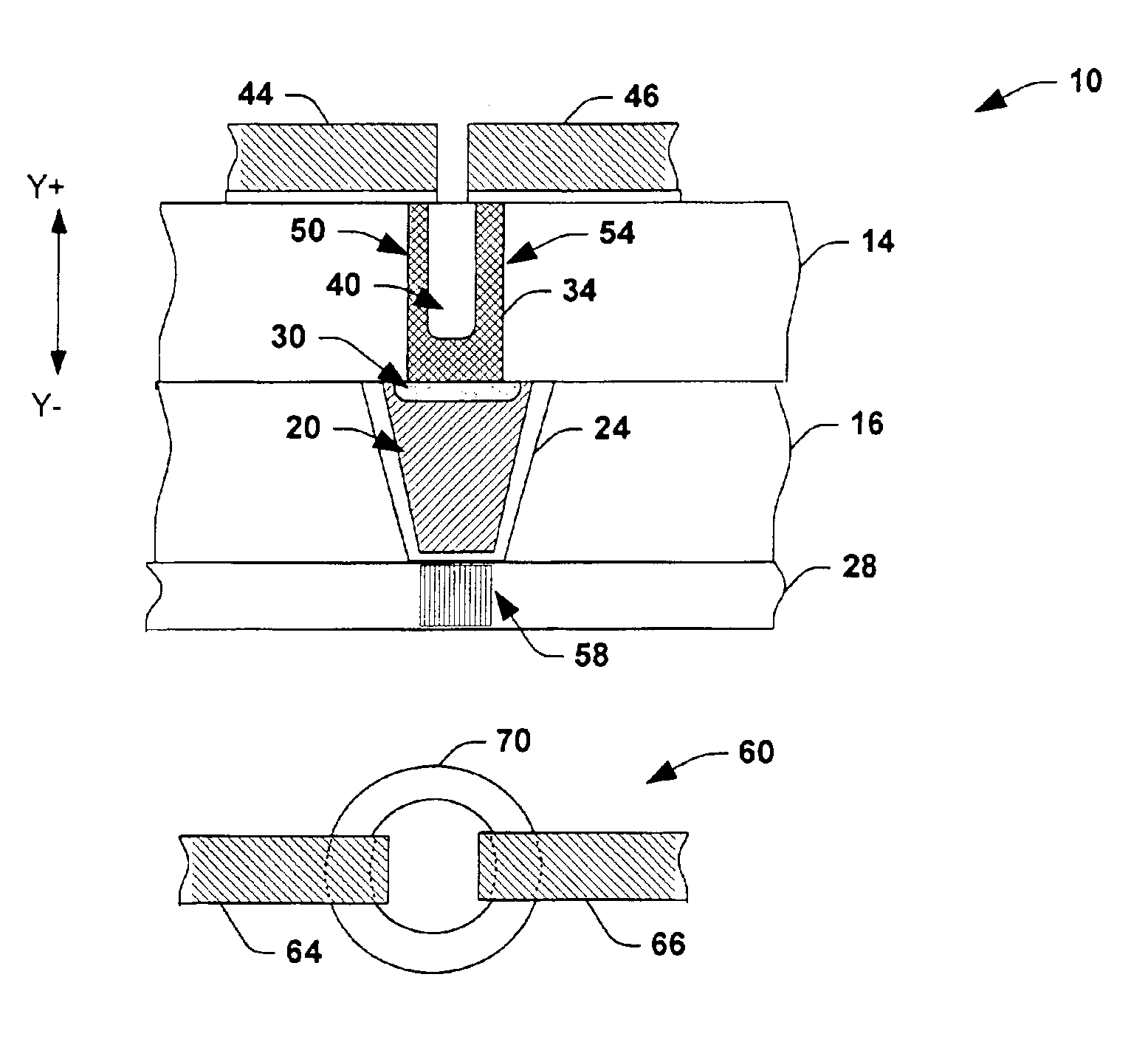Multi-cell organic memory element and methods of operating and fabricating
a memory element and organic technology, applied in the field of multi-cell organic memory devices, can solve the problems of increasing the volume, use and complexity of computers and electronic devices, reducing the efficiency of data storage, so as to facilitate the migration of charge, improve the utilization rate and density, and short resistance/impedance switch time
- Summary
- Abstract
- Description
- Claims
- Application Information
AI Technical Summary
Benefits of technology
Problems solved by technology
Method used
Image
Examples
Embodiment Construction
[0026]The present invention provides a multi-cell organic memory device that can operate as a non-volatile memory device having a plurality of multi-cell memory structures constructed within the memory device. A lower electrode can be formed such as from a single or dual damascene process, wherein one or more passive layers are formed on top of the lower electrode. An Inter Layer Dielectric (ILD) is formed above the passive layers and lower electrode, whereby a via or other type relief is created within the ILD and an organic semiconductor material is then utilized to partially fill the via above the passive layer. The portions of the via that are not filled with organic material are filled with dielectric material, thus forming a multi-dimensional memory structure above the passive layer or layers and the lower electrode. One or more top electrodes are then added above the memory structure, whereby distinctive memory cells are created within the organic portions of the memory struc...
PUM
| Property | Measurement | Unit |
|---|---|---|
| Digital information | aaaaa | aaaaa |
| Dielectric polarization enthalpy | aaaaa | aaaaa |
| Structure | aaaaa | aaaaa |
Abstract
Description
Claims
Application Information
 Login to View More
Login to View More - R&D
- Intellectual Property
- Life Sciences
- Materials
- Tech Scout
- Unparalleled Data Quality
- Higher Quality Content
- 60% Fewer Hallucinations
Browse by: Latest US Patents, China's latest patents, Technical Efficacy Thesaurus, Application Domain, Technology Topic, Popular Technical Reports.
© 2025 PatSnap. All rights reserved.Legal|Privacy policy|Modern Slavery Act Transparency Statement|Sitemap|About US| Contact US: help@patsnap.com



